Have you ever wondered how the Pros play so fast? Here are some clues… After reading this article you will be equipped with the guidelines necessary to properly finger notes on the Oud fingerboard.
1. Make use of two hand positions
For left hand technique there are two main hand positions you can use when playing the Oud, I have termed these:
The whole hand position
This position uses all four fingers to hold down the notes on the fingerboard. That is, we use one finger for each half-tone or semi-tone on the finger board. See picture:
This position is used when you need to make long stretches with your fingers like when playing Maqam Hijaz. For example, if you were playing Hijaz in D, starting from the D string, you would play E flat/quarter flat with index finger and F sharp/quarter sharp with your pinky finger, and you would play open G string to play G.
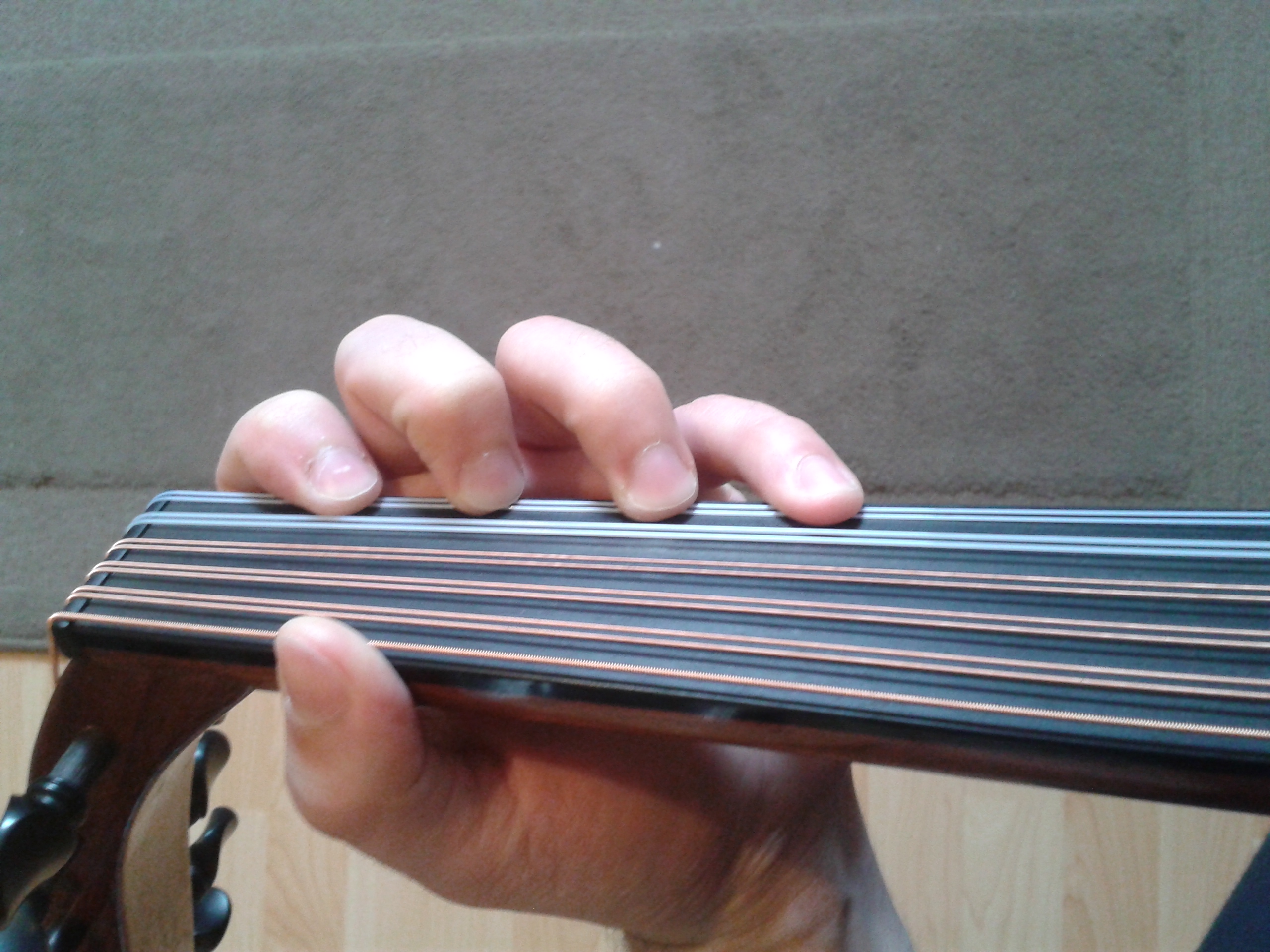
The Closed Hand Position
The Closed Hand Position is when you only use 3 out of 4 of your fingers to play notes. This occurs when you need to finger an open string note. For example, this may happen when you need to play a trill from F sharp to G when playing Hijaz in D. In the Closed Hand Position your index finger leads the rest of the fingers, in other words, it moves up and down the fingerboard. See picture below…
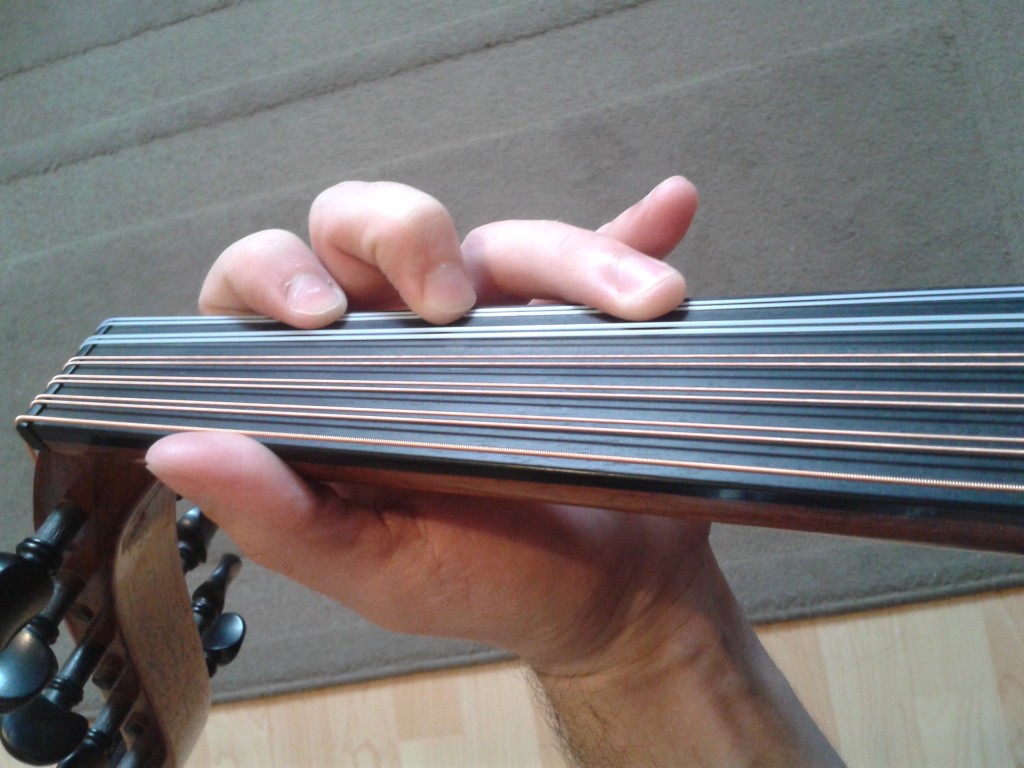
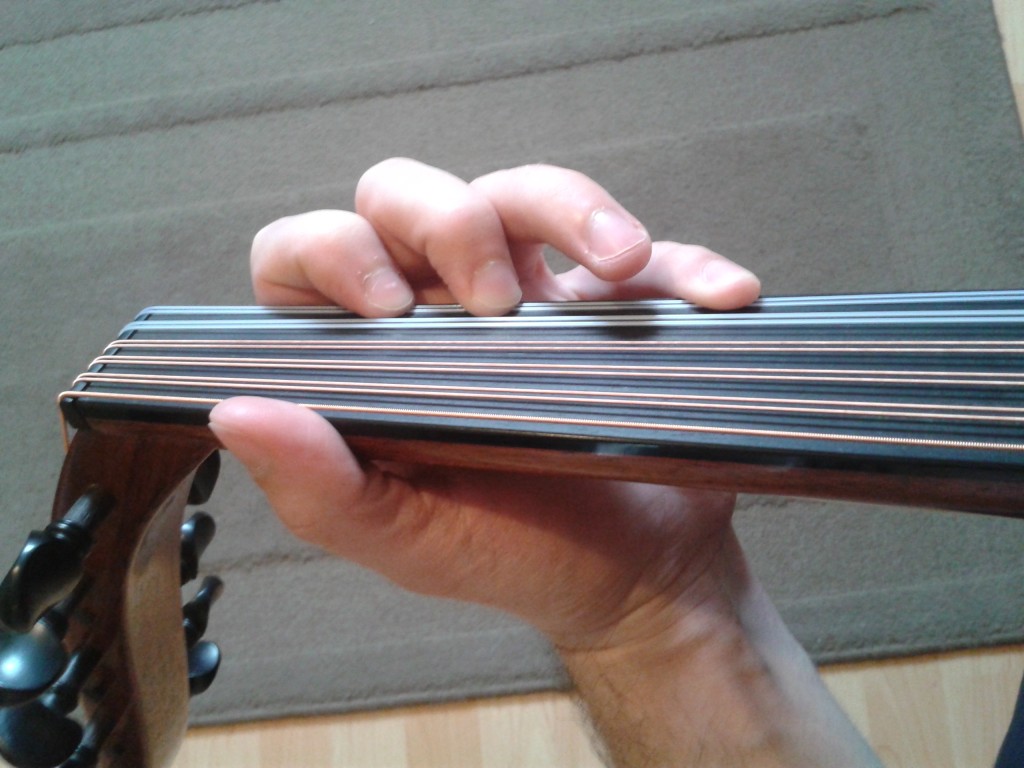
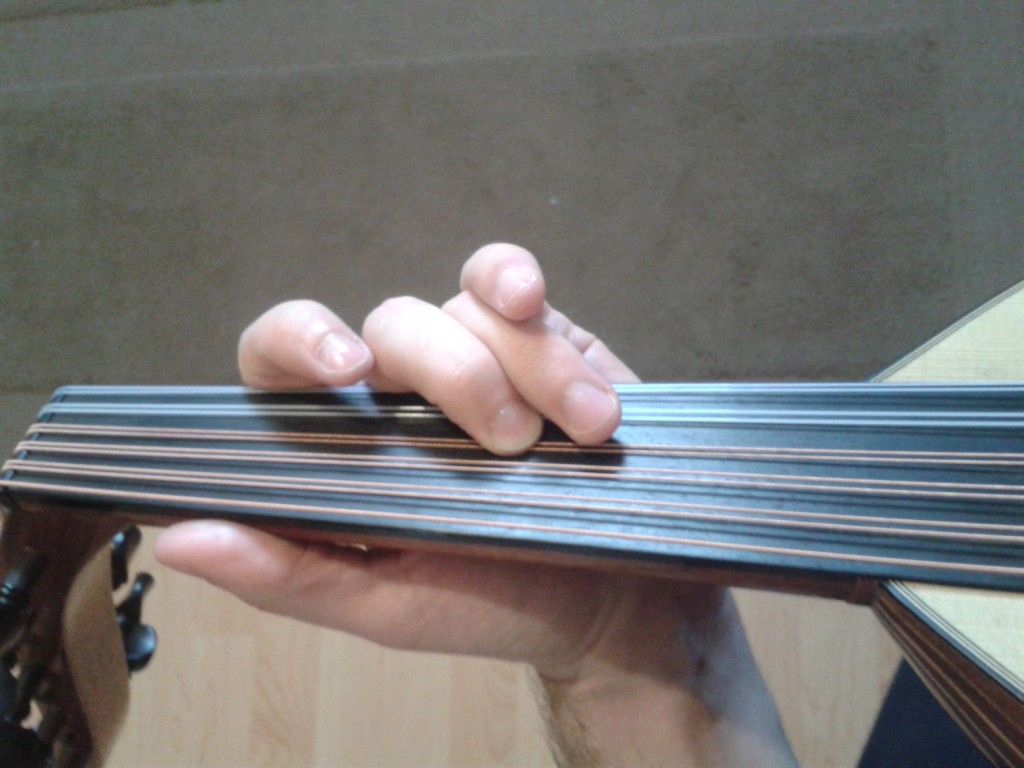
In general, it is a good rule to designate one finger per note, and the most common hand position would be the Whole Hand Position, but my main point is that you have to remember to be flexible and change your hand position from time to time.
Apparently, the older Oud technique only made use of the first 3 fingers in fingering notes… I don’t know where this originated, but I know that Ostad Nariman only used 3 fingers to play Oud, and apparently some Armenian Oud players still only use 3 fingers.
2. Be prepared for the next note
Left hand technique is really about always having your fingers prepared for the next note in the passage. That means if you are going up the fingerboard, make sure there are fingers available to hit all the notes. After you run out of fingers, use your index finger to move up the fingerboard…
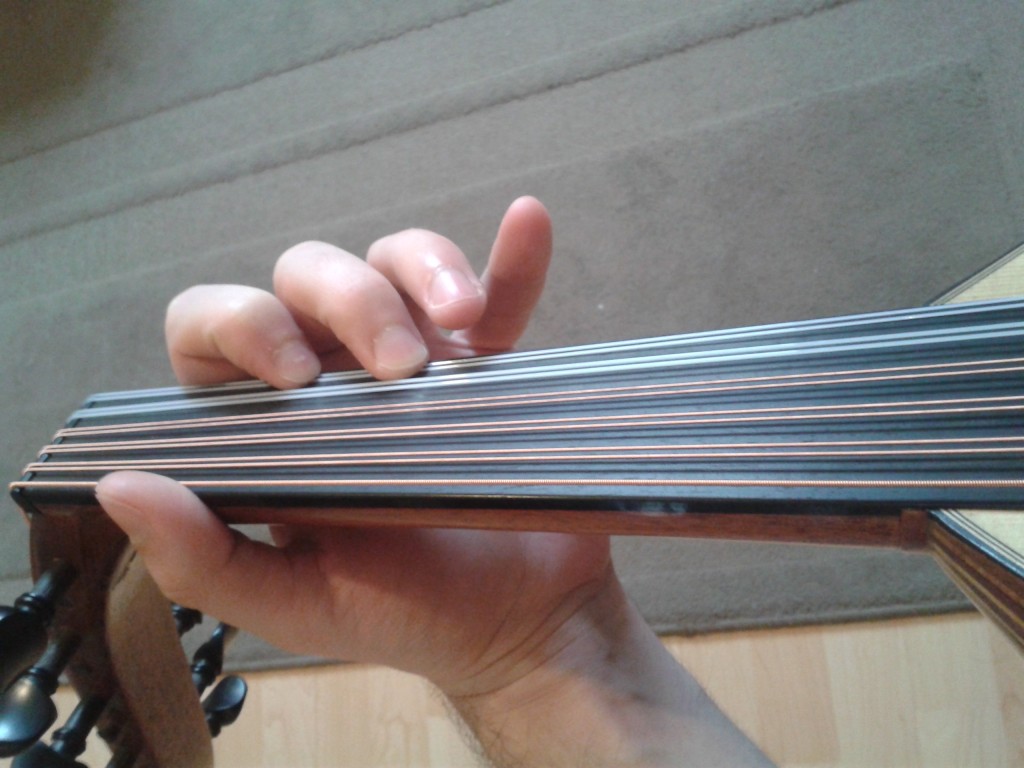
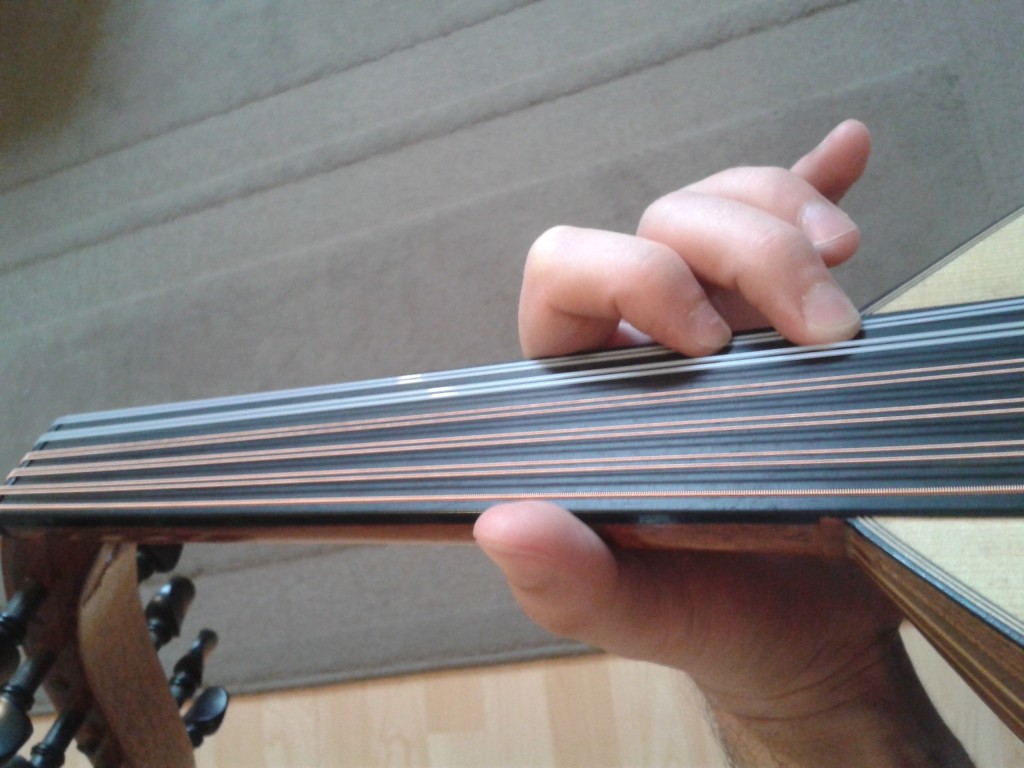
When descending the fingerboard, it is faster and easier to use only two finger placements at a time. Use either third finger and index finger, or middle finger and index finger.
3. Keep your fingers close to the fingerboard
When playing the Oud, try not to let your fingers move too far away from the fingerboard. Because Oud is fretless, it takes some aim to get the right intonation, and it is easy to lift our fingers up a lot in order to make one note hit. Watch out for this.
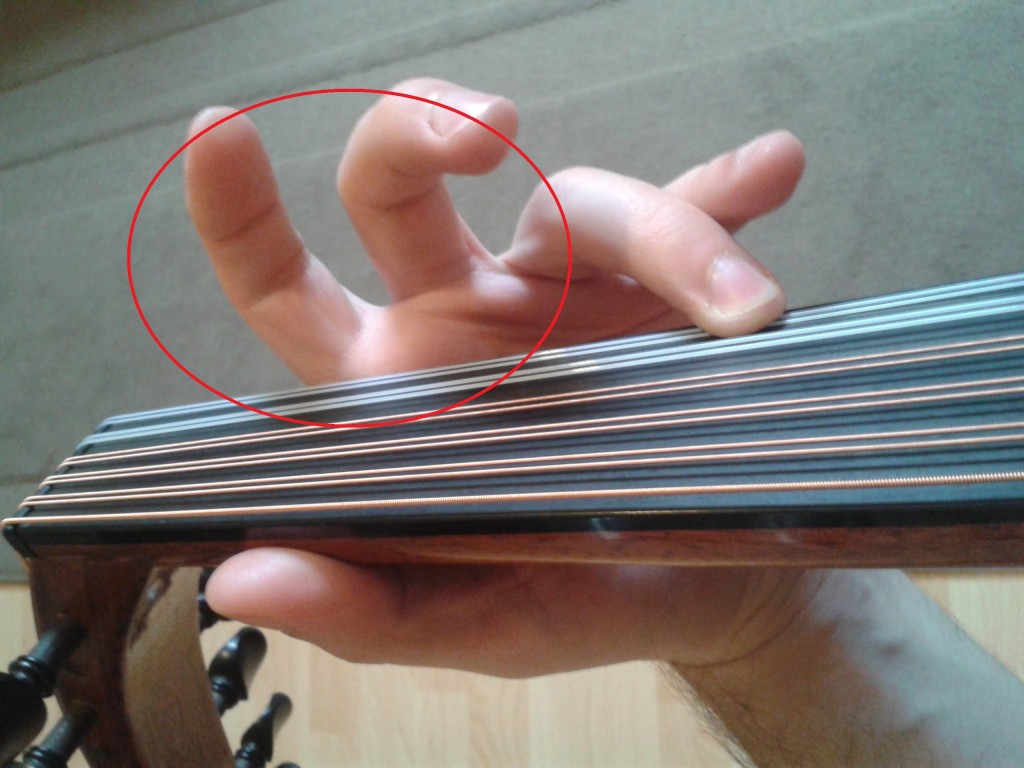
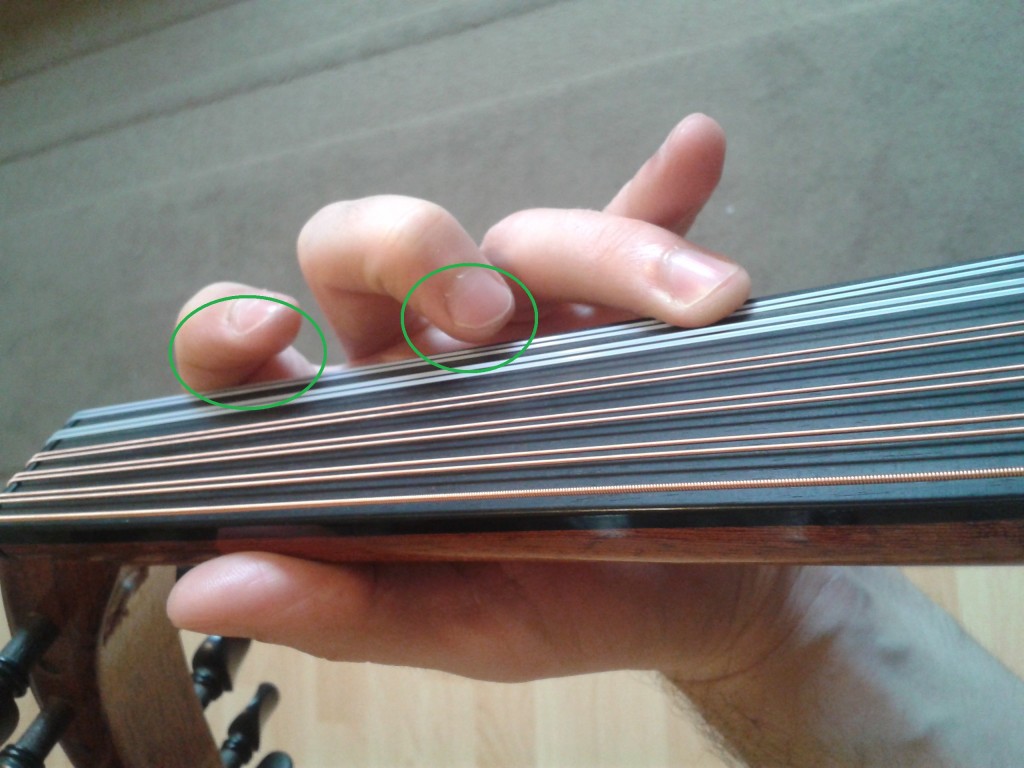
If you allow your fingers to get too far from the fingerboard you won’t be able to play as fast or as accurately. It is like trying to play darts from too far away… Keep your distance close and you will find the target!
It is not always possible to do this, but watch for it in your playing and keep it in mind. It will help you play fast passages.
4. Use 3 fingers when playing high up on the fingerboard
The Oud is not as short as a Mandolin, so don’t expect to be able to always use 4 fingers when playing. At most, your hand positions allow for fingering 3 notes, unless you are playing a very chromatic passage. Your hand should look like this when playing high up on the fingerboard…
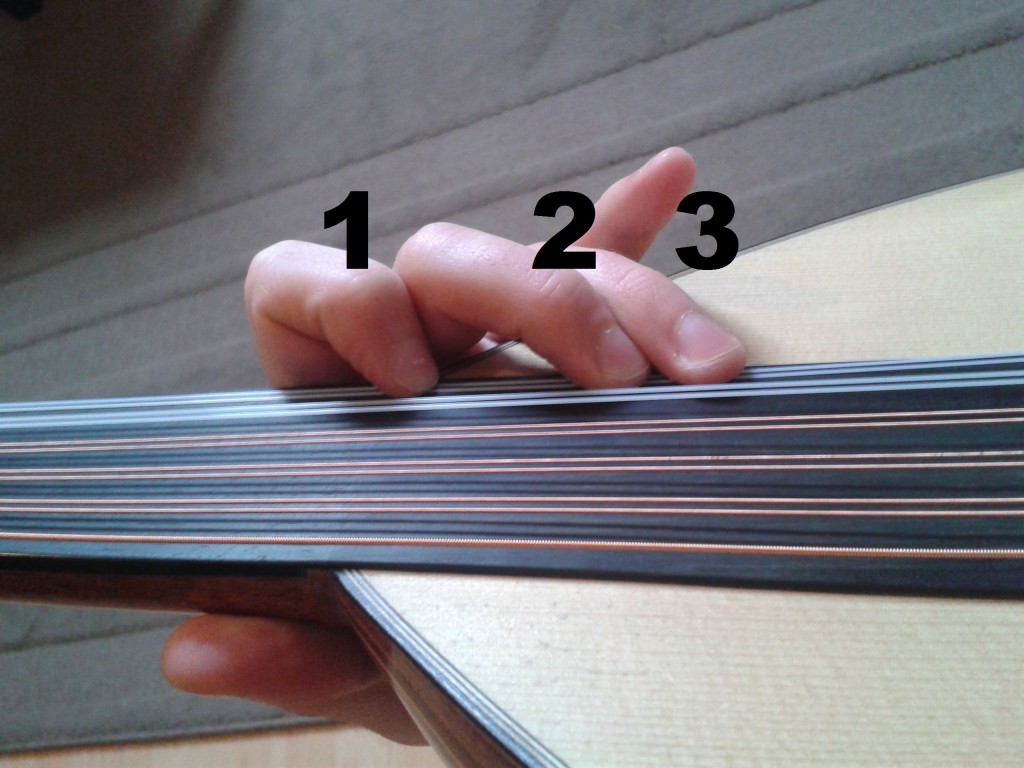
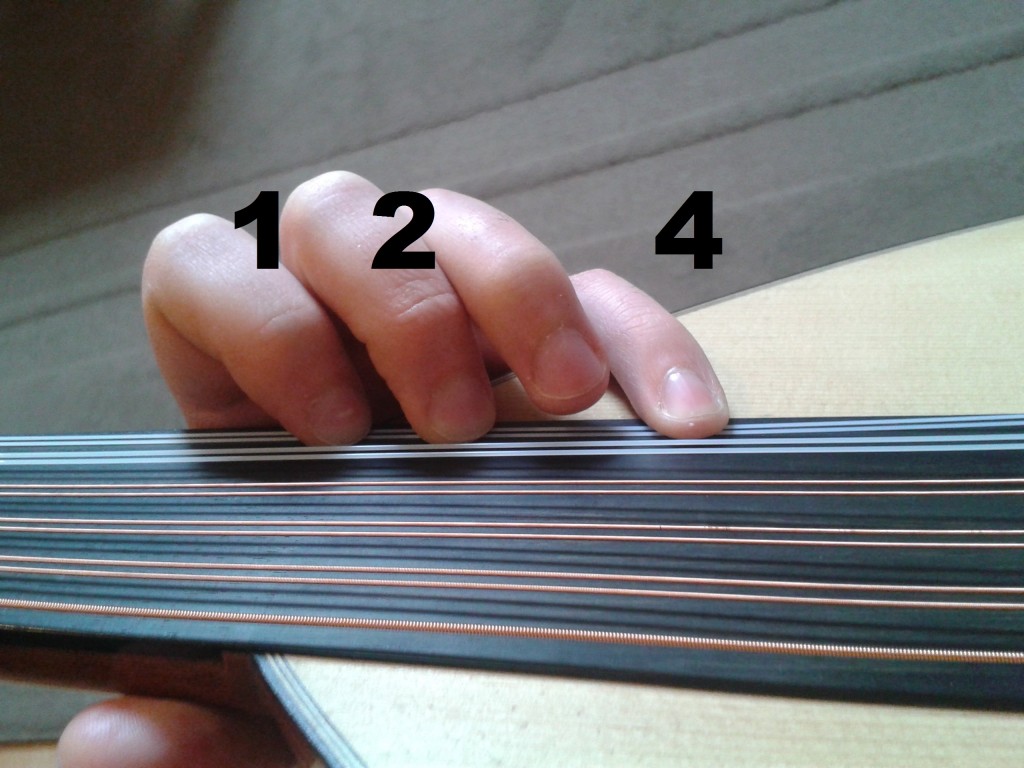
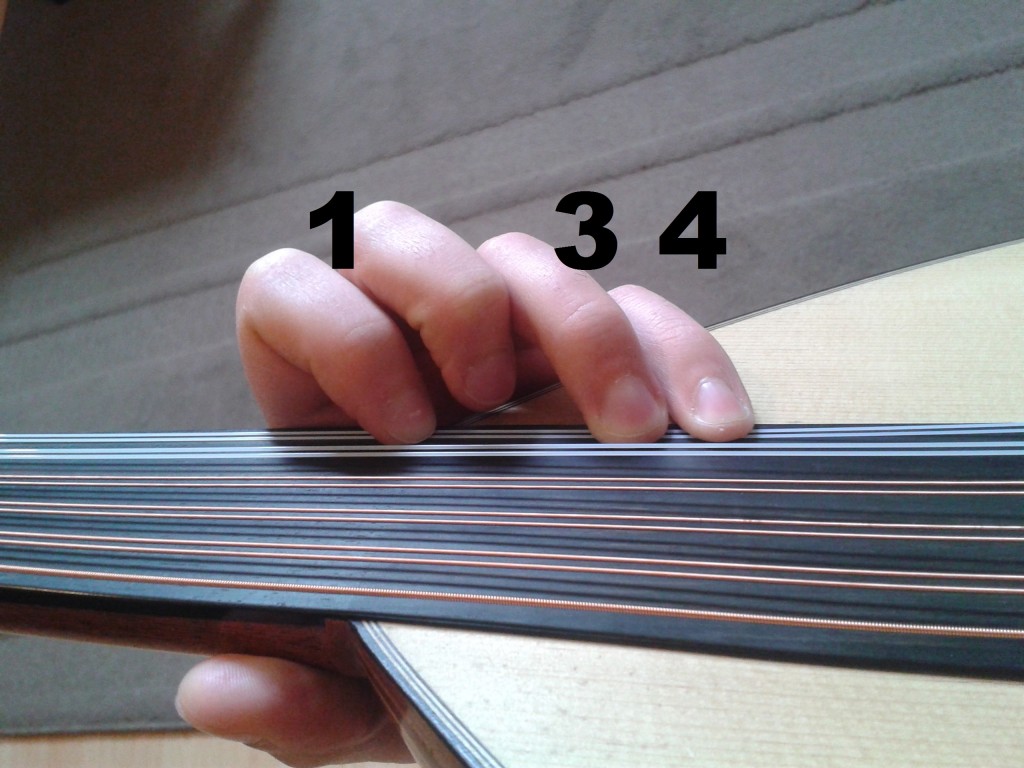
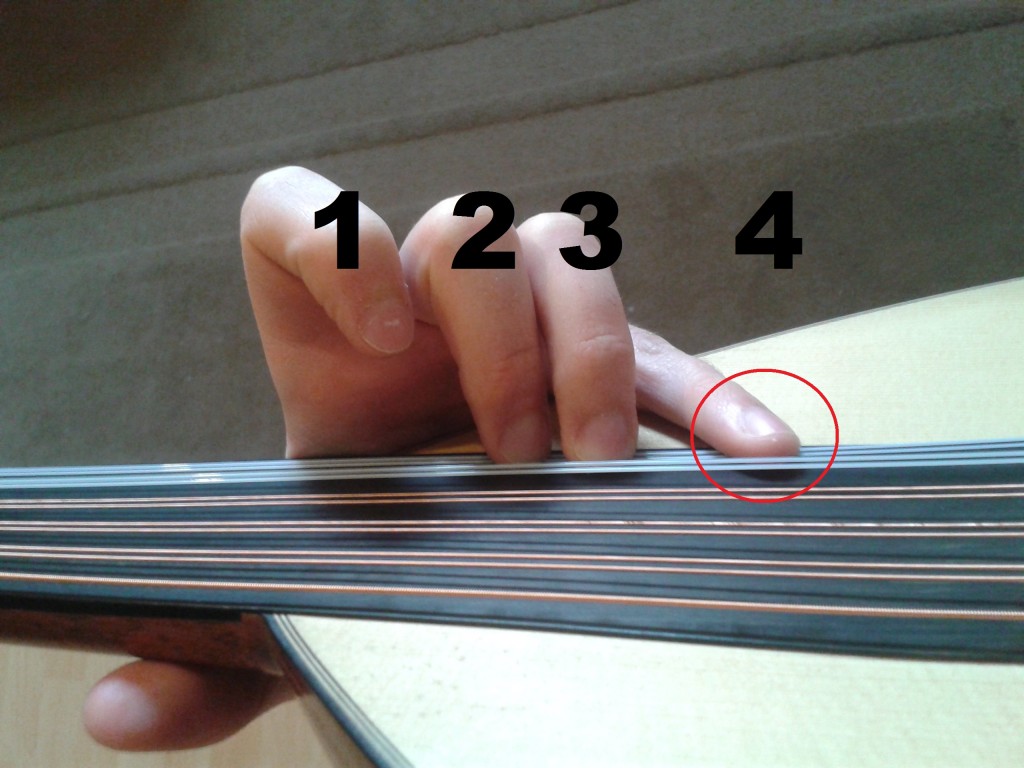
Which finger you use really depends on the notes and the passage you are playing. There are so many combinations of notes and passages and it is not always certain which fingering to use. You must always keep in mind what note comes after and what is the easiest way to play it with the fingers you have available. Keeping this principle in mind with always guide your left hand technique.
5. To play fast, don’t forget about the open G course
Certain passages would be impossible to play if we had to play it all on the same string. That’s why there are more…
When playing passages high up on the fingerboard and you have to quickly jump down to a lower note and back up again, or go down the scale very fast, remember what other notes are available parallel to your hand position.
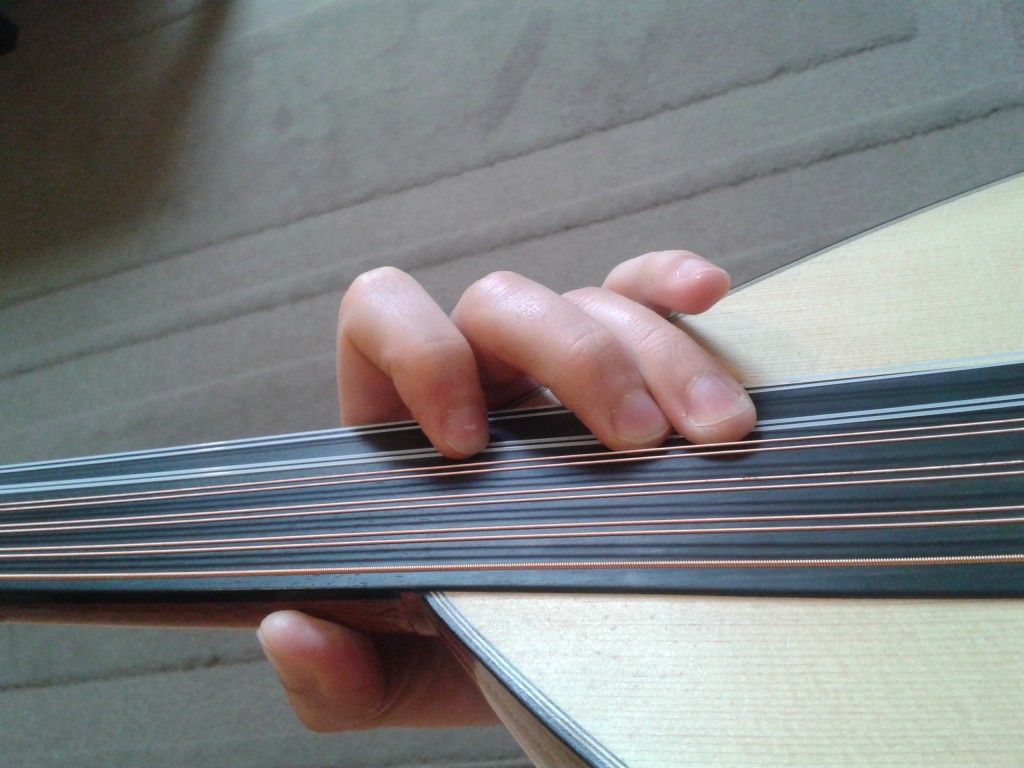
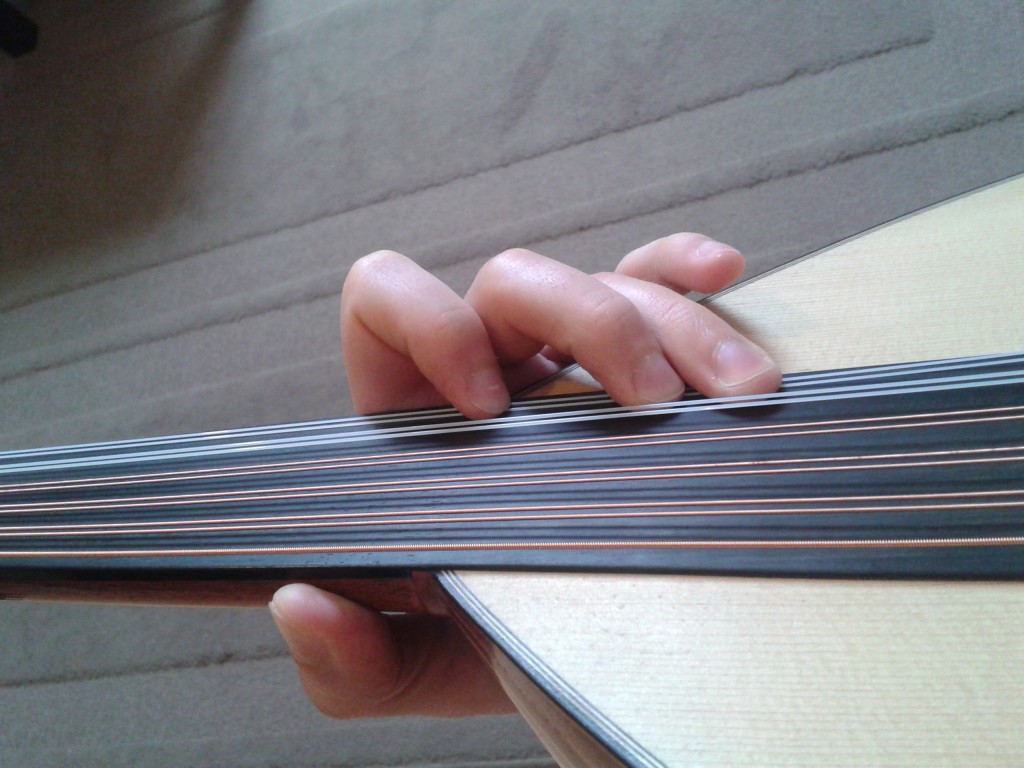
6. Keep your fingernails short
Keeping your fingernails short helps you to play the Oud comfortably. You will be able to create a warm sound by using the meat of your fingertips. It will also help you keep the right intonation and play a nice vibrato.
It will also help prevent unnecessary damage to your fingerboard. Nails may unintentionally dig into the fingerboard causing wear and tear.
7. Keep your Oud in tune
If all the strings on your Oud are not in tune with each other, it will be hard to get the right intonation when you play. You can compensate for this by moving your finger up or down to make the note sharper or flatter. But is better to stay consistent, especially when you are learning.
If you need help keeping your Oud in tune, I made a free video about it.
There’s no need to focus too much on speed
Learning the Oud opens you up to another world of music. Always remember that learning how to play fast is not the end all of playing the Oud. You don’t have to play fast all the time. This is what Ross Daly had to say about playing Middle Eastern music in relation to speed and technique. But first… sign up below to get more free Oud lessons delivered to your inbox every week.





